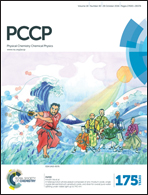Understanding the role of silica nanospheres with their light scattering and energy barrier properties in enhancing the photovoltaic performance of ZnO based solar cells
Abstract
The present study discusses the design and development of a dye sensitized solar cell (DSSC) using a hybrid composite of ZnO nanoparticles (ZnO NP) and silica nanospheres (SiO2 NS). A ≈22% enhancement in the overall power conversion efficiency (PCE, η) was observed for the device fabricated with a binary hybrid composite of 1 wt% SiO2 NS and ZnO NP compared to the pristine ZnO NP device. A systematic investigation revealed the dual function of the silica nanospheres in enhancing the device efficacy compared to the bare ZnO NP based device. Sub-micron sized SiO2 NS can boost the light harvesting efficiency of the photoanode by optical confinement, resulting in increased propagation length of the incident light by multiple internal reflections, which was confirmed by UV-Vis diffused reflectance spectroscopy. Electrochemical impedance spectroscopic (EIS) analysis showed a reduced recombination of photo-generated electrons to the I−/I3− redox shuttle in the case of the composite photoanode. The higher recombination resistance (Rct) in the case of a 1 wt% composite indicates that the SiO2 NS serves as a partial energy barrier layer to retard the interfacial recombination (back transfer) of photo-generated electrons at the working electrode/electrolyte interface, increasing the device efficiency.


 Please wait while we load your content...
Please wait while we load your content...